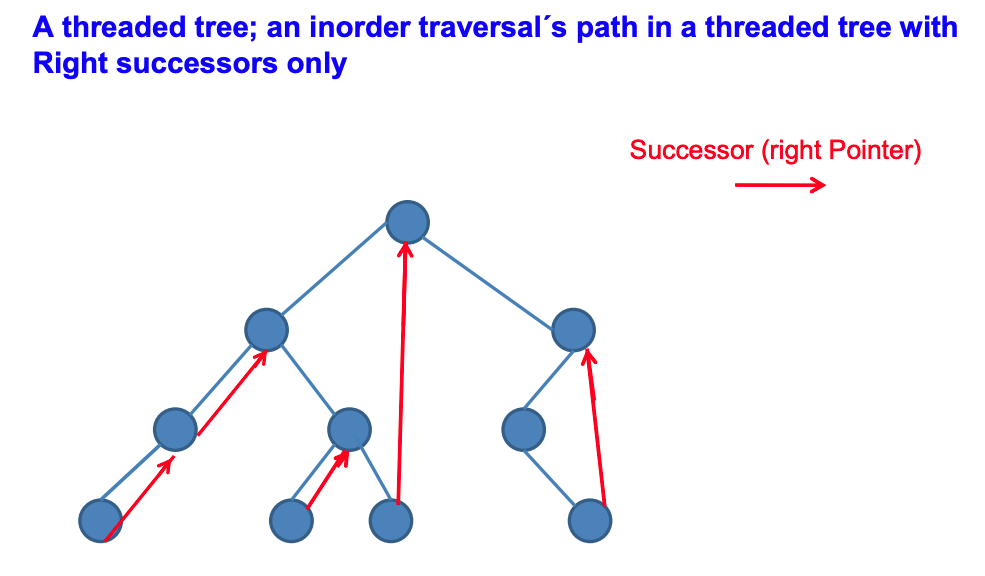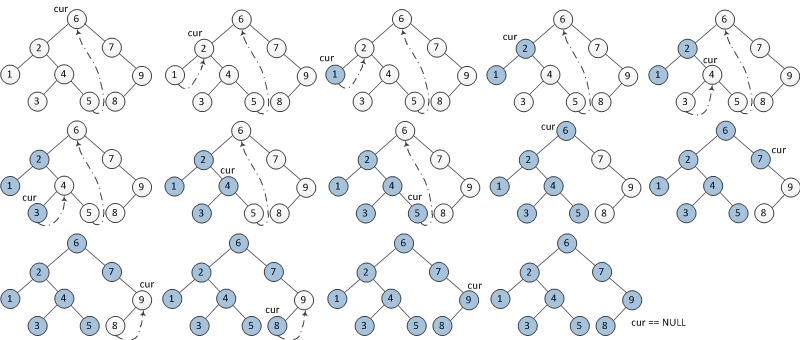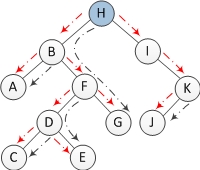Notes
Score of Parentheses
Given a balanced parentheses string s, return the score of the string.
The score of a balanced parentheses string is based on the following rule:
()has score 1.ABhas score score(A) + score(B), whereAandBare balanced parentheses strings.(A)has score 2 * score(A), whereAis a balanced parentheses string.
int scoreOfParentheses(string s) {
int ans = 0;
int cnt = 0;
vector<int> V;
for(char c: s){
// if we find open parenthesis
// push the current score into the stack
if(c == '('){
V.push_back(cnt);
// reset the score to 0
cnt = 0;
} else {
cnt = V.back() + max(2*cnt, 1);
V.pop_back();
}
}
return cnt;
}
Without using stack
int scoreOfParentheses(string s) {
int depth = 0, res = 0;
char prev = '(';
for (const char & ch: s) {
if (ch == '(')
depth++;
else {
depth--;
if (prev == '(')
res += pow(2, depth);
}
prev = ch;
}
return res;
}
Smallest Subsequence of Distinct Characters
Given a string s, remove duplicate letters so that every letter appears once and only once. You must make sure your result is the smallest in lexicographical order among all possible results.
string removeDuplicateLetters(string s) {
vector<int> V(26); // count of letters
for(char c:s) V[c-'a']++;
string ans;
for(char c: s){
if(ans.find(c) == string::npos){
// if the character is not considered already
while(ans.back() > c && V[ans.back()-'a']){
ans.pop_back();
}
ans.push_back(c);
}
V[c-'a']--;
}
return ans;
}
Morris Traversal - InOrder Traversal without stack
Morris Traversal method traverses the binary tree (non-recursive, no stack, O(1) space)
-
To use O(1) space for traversal, the biggest difficulty lies in how to return to the parent node when traversing to the child node (assuming there is no p pointer to the parent node in the node), because the stack cannot be used as an auxiliary space.
-
To solve this problem, Morris method uses a threaded binary concept (threaded binary tree) of.
-
In the Morris method, there is no need to allocate additional pointers to each node to point to its predecessor and successor, just use the left and right null pointers in the leaf node to point to the predecessor or successor node under a certain order of traversal.

Inorder Traversal without using list, just keeping previous node
Finding minimum difference in BST
https://leetcode.com/problems/minimum-absolute-difference-in-bst/editorial/
class Solution {
public:
int minDifference = INT_MAX;
// Initially, it will be null.
TreeNode* prevNode;
void inorderTraversal(TreeNode* node) {
if (node == NULL) {
return;
}
inorderTraversal(node->left);
// Find the difference with the previous value if it is there.
if (prevNode != NULL) {
minDifference = min(minDifference, node->val - prevNode->val);
}
prevNode = node;
inorderTraversal(node->right);
}
int getMinimumDifference(TreeNode* root) {
inorderTraversal(root);
return minDifference;
}
};
Algorithm
-
If the left child of the current node is empty, output the current node and use its right child as the current node.
-
If the left child of the current node is not empty, find the predecessor node of the current node under the in-order traversal in the left subtree of the current node.
a) If the right child of the predecessor node is empty, set its right child as the current node. The current node is updated as the left child of the current node.
b) If the right child of the predecessor node is the current node, reset its right child to empty (restore the shape of the tree). Output the current node. The current node is updated as the right child of the current node.
-
Repeat above 1 and 2 until the current node is empty.
Execution order left to right

void inorderMorrisTraversal(TreeNode * root) {
TreeNode * cur = root, * prev = NULL;
while (cur != NULL) {
if (cur -> left == NULL) // 1.
{
printf(" %d ", cur -> val);
cur = cur -> right;
} else {
// find predecessor
prev = cur -> left;
while (prev -> right != NULL && prev -> right != cur)
prev = prev -> right;
if (prev -> right == NULL) // 2. a)
{
prev -> right = cur;
cur = cur -> left;
} else // 2.b)
{
prev -> right = NULL;
printf(" %d ", cur -> val);
cur = cur -> right;
}
}
}
}
Complexity Analysis
Complexity analysis:
Space complexity: O(1), because only two auxiliary pointers are used.
Time complexity: O(n). Prove that the time complexity is O(n). The biggest doubt is the time complexity of finding the predecessor node of all nodes in the binary tree under the middle order traversal, that is, the following two lines of code:
while (prev->right != NULL && prev->right != cur)
prev = prev->right;
Intuitively, I think its complexity is O(nlgn), because finding the predecessor node of a single node is related to the height of the tree.
But in fact, it only takes O(n) time to find the predecessor nodes of all nodes. There are a total of n-1 edges in a binary tree of n nodes.
In the whole process, each edge can only go up to 2 times, once to locate a certain node, and the other time to find the predecessor node of a certain node above, as shown in the figure below. As shown, the red line is to locate a certain node, and the black line is to find the predecessor node. So the complexity is O(n).

source: https://www.cnblogs.com/AnnieKim/archive/2013/06/15/morristraversal.html
Different ways of finding duplicated in an array
https://leetcode.com/problems/find-the-duplicate-number/solution/